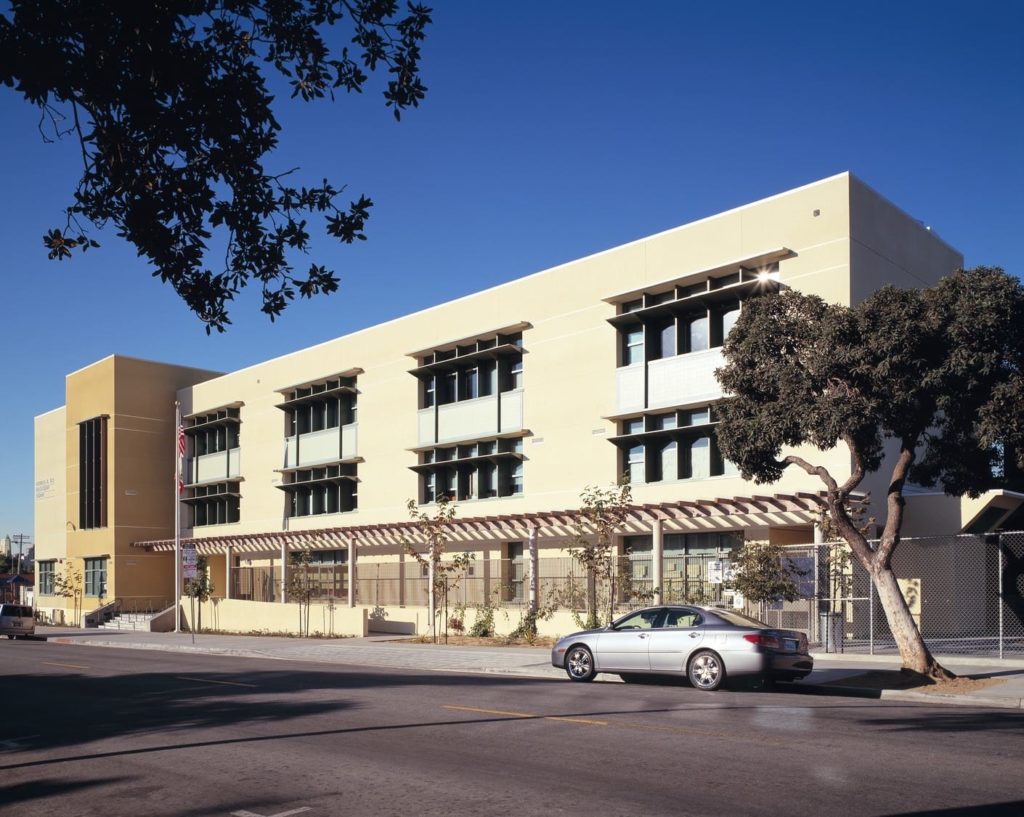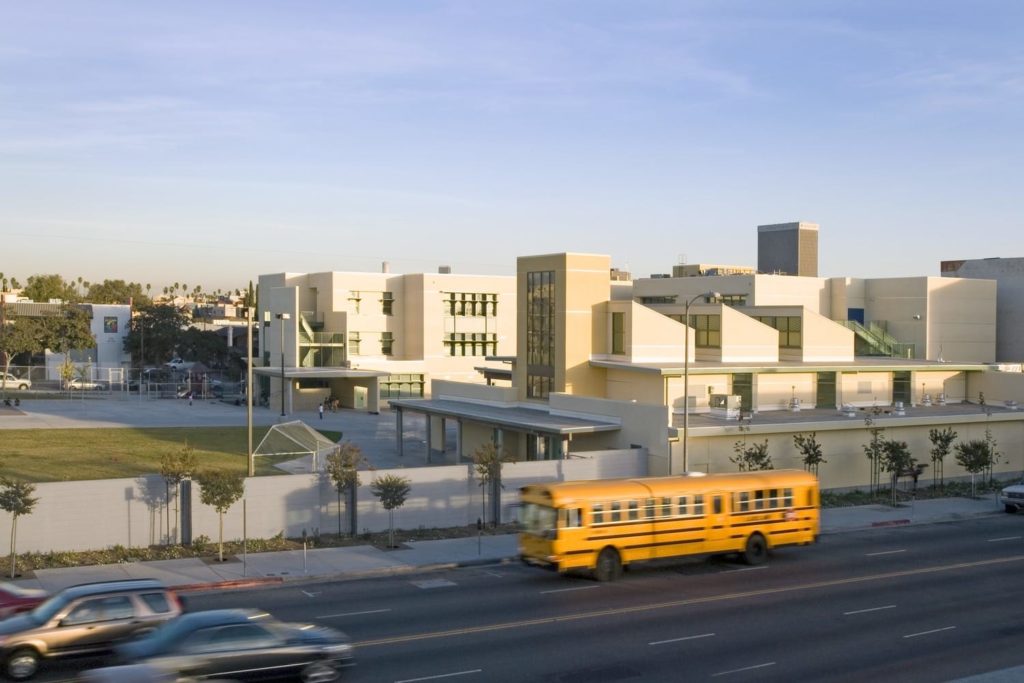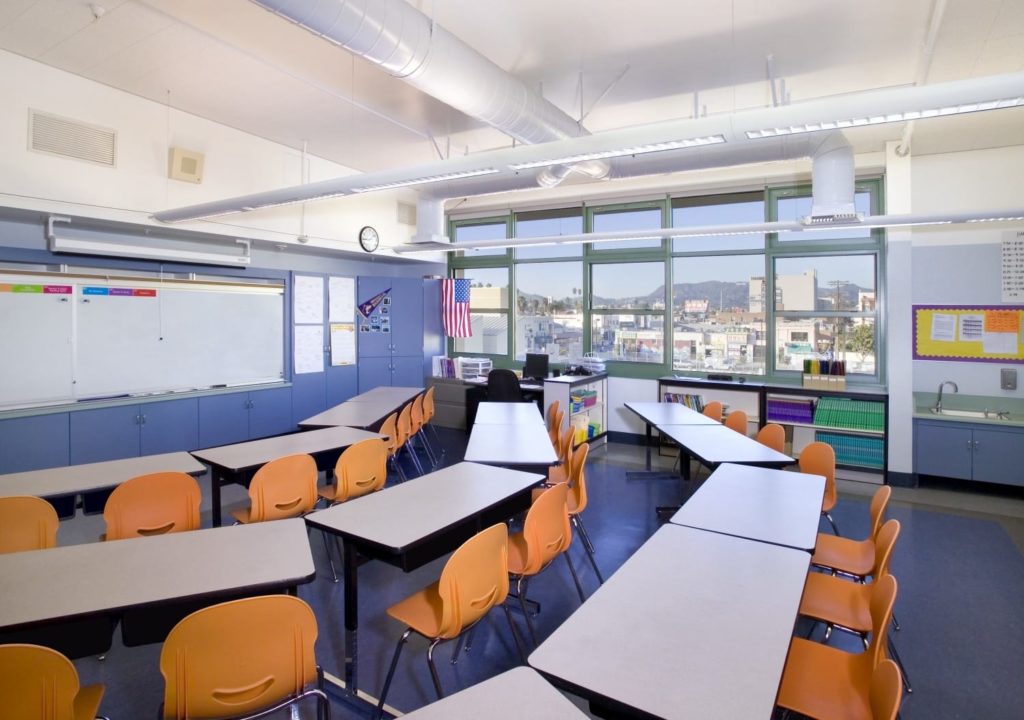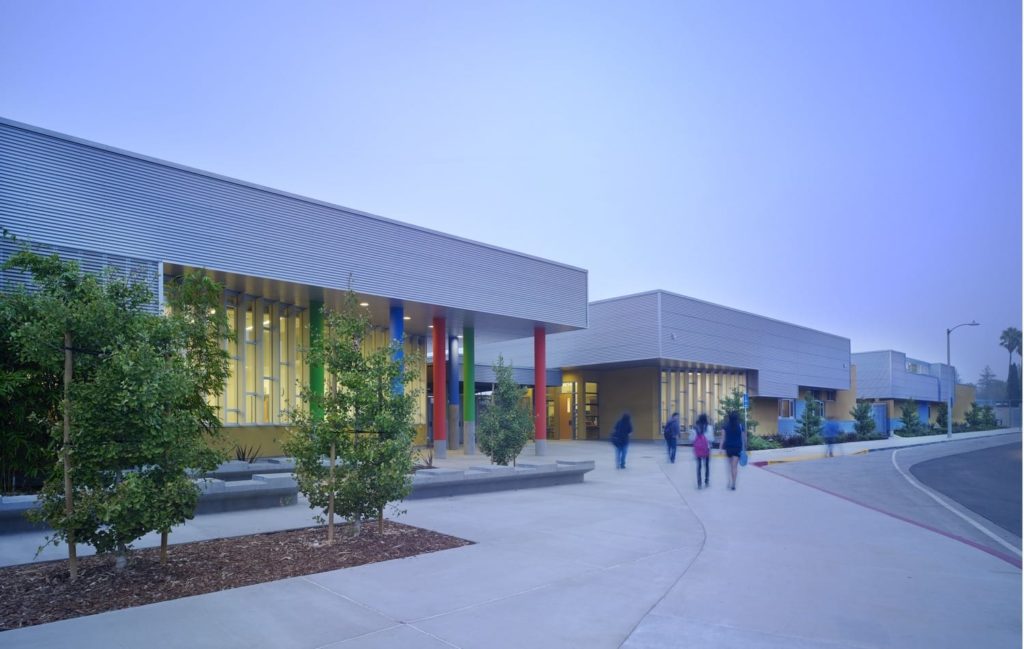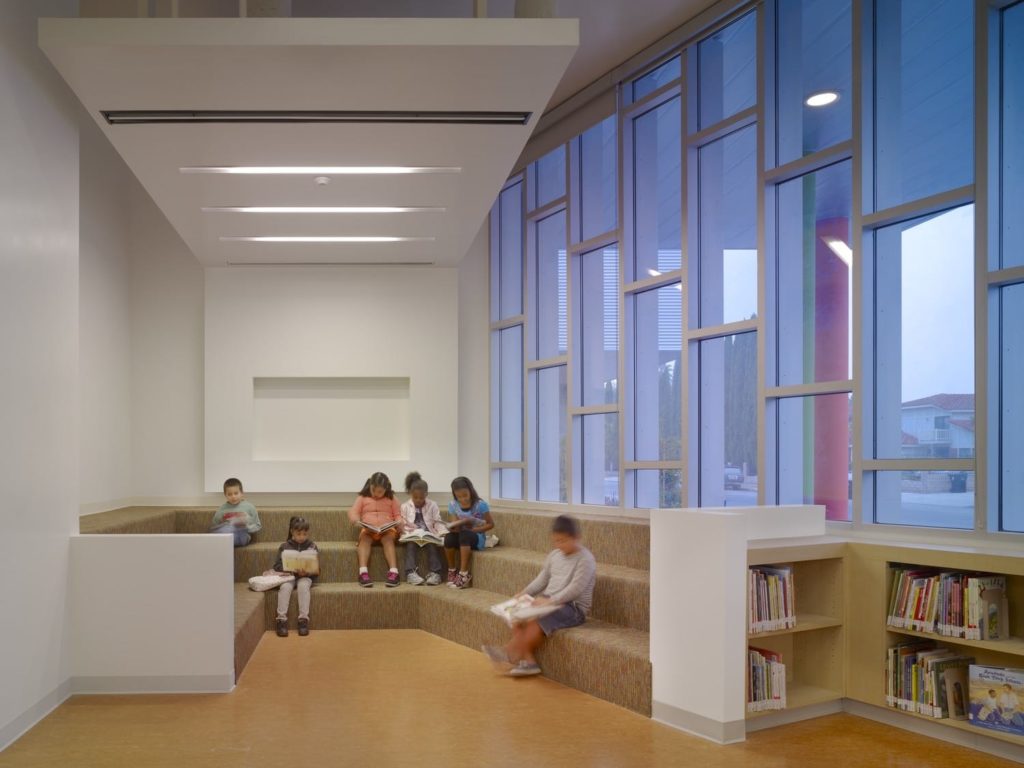Since 1997, voters in Los Angeles Unified School District (LAUSD) have approved a series of bonds dedicating over $27 billion in local and state funding to the construction, expansion, and renovation of hundreds of school facilities. This was one of largest public infrastructure programs in the United States since the construction of the interstate highway system. Through this bond program, LAUSD constructed 131 new schools at a cost of over $10 billion. My colleague, David Schönholzer, and I study these new school openings in Los Angeles to provide new evidence on the effects of improving school infrastructure on students and neighborhoods (Disclaimer: this research is from an unpublished working paper that is currently going through the peer review
process).
… neighborhood house prices increase by around 6% following a new school opening.
These new school facilities served a dual purpose. LAUSD schools were notoriously overcrowded prior to the new constructions. Over half of students attended school on a year-round, multi-track calendar meant to allow existing facilities to reach 133% or even 150% of intended capacity. Remarkably, by 2016-17 after the completion of the construction program, there was only one school remaining on such a calendar.
Many schools in LAUSD were also in exceptionally poor condition after decades of neglect and overcrowding. Stories of broken and missing equipment, non-functioning restrooms, and inadequate climate control were common. A 1999 review of facilities practices in LAUSD and other California districts noted that the district’s school buildings were “overcrowded, uninspiring, and unhealthy”. New school constructions alleviated these issues for many students, and additional funding for school modernization generated improvements in the school environment for many students attending school in existing facilities.
Despite the importance of school spaces to learning, there is little agreement in the academic literature over the link between spending on school infrastructure and improvements in student outcomes. Some studies have found positive associations while many others have failed to find such connections. Constructing new school buildings is often a multi-year project, affects only a subset of students in a district, and leads to changes in the school environments that affect students in ways that may not be immediately measurable. For these reasons, much of the prior work is very limited in its ability to determine the causal effects of new school buildings.
In contrast, the enormous scale of the LAUSD program allows us to use the new school openings as a “natural experiment” to tease out the effects of new school openings on students, schools, and neighborhoods. We use the records for millions of students who attended school in LAUSD between 2002 and 2012 and study how test scores, course grades, and attendance rates changed after students switched into newly constructed schools in their neighborhoods. We also use real estate sales records from hundreds of thousands of properties to examine how neighborhood house prices respond to nearby new school openings.
We find that students who attended new school buildings saw notable improvements in math test scores and modest improvements in English test scores. These improvements were gradual, and accumulated with each additional year a student spent in a new school building. In 2002, just as the first new schools were beginning to open, students in LAUSD were far below their grade-level peers in California in both English and Math. Our findings imply that attending a newly constructed school for four or more years closes 45% of the math achievement gap and 18% of the English achievement gap between LAUSD students and the California average.
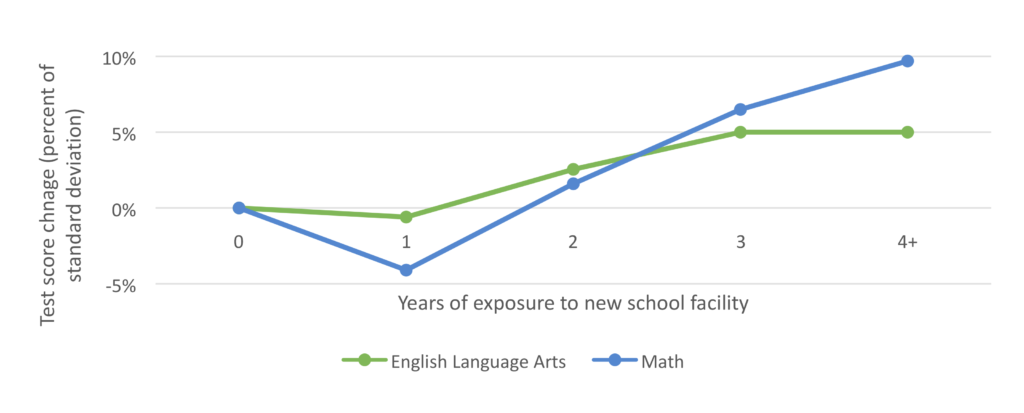
In addition, students at new schools attended an average of four more days per academic year than they had been previously. Elementary school teachers at new schools also reported slightly higher levels of student effort on student report cards. This suggests that improved student motivation is behind at least some of the positive effects we find.
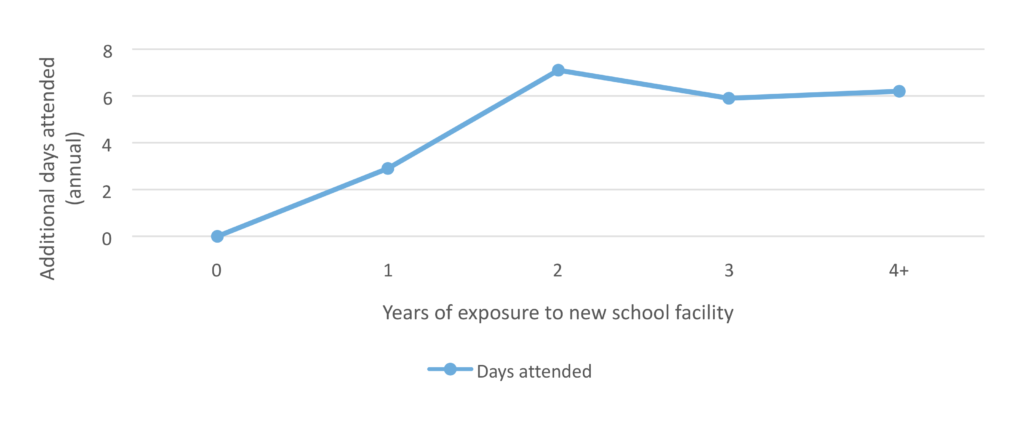
We rule out that these improvements are coming from better teachers, principals, or peers. We also find students who switched from older buildings or ones with a greater reliance on portables saw larger gains than those students whose prior schools were in better physical condition. Overall, we conclude that the improvements are primarily the result of better school buildings, with reductions in overcrowding also an important factor. We unfortunately lacked consistent data on the features of these schools, meaning we could not conclusively determine which specific features of the new buildings were most effective at improving student learning.
Turning to the housing market, we find that neighborhood house prices increase by around 6% following a new school opening. Prices only increase after the new school is completed – and only in the new school catchment areas – providing compelling evidence that the new schools are highly valued by parents and other local residents. Not all improvements from new school buildings translate into changes in test scores or attendance, but the increases in house prices reflect some of these more general improvements in the school environment and in the broader neighborhood. We estimate that the valuation of these improvements was so large that for each dollar of expenditures the district undertook it generated around 1.6 dollars in return – a more than worthwhile investment.
Our hope is that future research is able to build off these findings to study exactly why better school buildings lead to student success – and what specific aspects of school buildings are most effective at delivering these. Nationally, millions of students attend schools that are in “poor” condition, and estimates of the funding required to address these deficiencies are often in the hundreds of billions of dollars. The improvements generated from LAUSD’s school infrastructure program provide powerful new evidence that addressing these deficiencies in our school infrastructure could lead to worthwhile improvements in student learning, even taking into account the large upfront costs of these investments.


